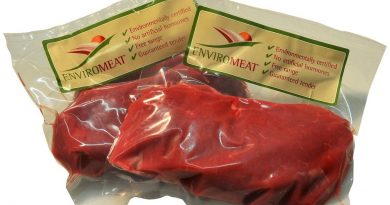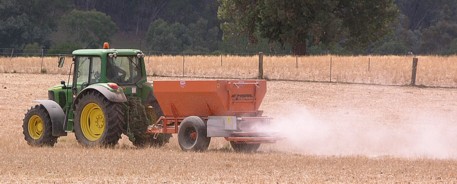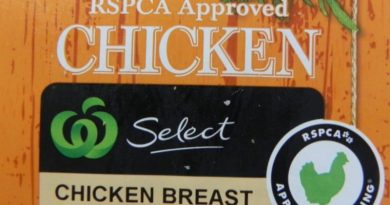Live sheep export Independent Observers reports inadequate for trade to continue
By Patrick Francis
I have studied all the Department of Agriculture and Water Resources (DAWR) “Independent observations of livestock export voyages by sea” reports pertaining to live sheep exports to the Middle East in April and May 2018 and believe they do not support the case for continuing the live sheep trade outside the already banned northern summer months.
The independent observers (IO) reports contain limited but sufficient information, table 1, to demonstrate significant welfare issues are happening on every voyage but always conclude that “…on ship management consistent with ASEL (Australian standards for export of livestock)”. This indicates that ASEL are insufficient to manage sheep husbandry and welfare on ship to the level expected in Australia.
The issues outlined in table 1 go unrecognised by people within organisations associated with the live sheep trade. For instance the DAWR 17 March 2019 media release stated that “There was little evidence of significant animal welfare issues on voyages during May 2018…”. A similar statement was made by DAWR in a 28 March 2019 media release about conditions being placed on live sheep exporters for voyages during May 2019 that “… during the previous northern summer …there was little evidence of significant animal welfare issues”.
On 28 April 2019 Australian Live Exporters Council (ALEC) CEO said “Since May 2018, live sheep shipments have operated under new stocking density requirements which have been overseen by independent observers on board, whose reports are confirming animals are being transported in a way which upholds their wellbeing.”
As Table 1 shows there were many issues on board ships that are a cause for concern around sheep welfare. The fact that every voyage had mortalities should have raised alarm for the Department, for exporters, and for farmers involved. Failure in this regard suggests that each party accepts sheep mortality and morbidity on voyages as part of doing business in this trade.
Table 1: Author’s summary of Independent Observers reports for six live sheep export voyages to the Middle East during April and May 2018. Source: DAWR Independent observations of livestock export voyages by sea.

Even DAWR’s Technical Advisory Committee’s “Review of the Australian Standards for the Export of Livestock: Sea Transport Final Report” released in March 2019 confirms that sheep deaths and suffering are part of the trade. While the committee makes genuine recommendations which should help reduce mortalities, morbidities and suffering especially from starvation it admits: “…that its recommendations must ‘balance the implications for animal welfare with the practicalities of livestock management, compliance costs and industry sustainability. These requirements make clear that the committee cannot focus solely on enhancing animal welfare – it must consider the impact of any proposed changes on the future viability of the industry.”
It seems all the live sheep export players are content, as evidenced by the independent observers (IOs) reports, to keep information about the voyages as vague as possible. Even the photos provided by the IOs are obscure to make them virtually useless for assessing sheep welfare. Combine the voyage IOs reports with no information about the welfare of pre-conditioned sheep in feedlots prior to the voyage and no information about sheep status on disembarkation and you have a trade that cannot be trusted.
What is trust?
One of the most valuable papers I have read about trust in the agriculture value chain was written by Dr Heather J. Bray, School of Biological Sciences, University of Western Australia, and Professor Rachel A. Ankeny, School of Humanities, University of Adelaide. (The full paper is included on this web site). What Bray and Ankeny said about trust applies to the live sheep export trade.
In their view “there needs to be shared values between those who are trusting and those who are trusted, not just in terms of caring about the same things, but also sharing values about how things are done. For most people, that means that the people that we trust adhere to rules and standards and act with integrity. How people have acted in the past also becomes part of our judgement about whether to trust them.
“Another key component of trust relates to competence or expertise — ‘to say we trust you means we believe you have the right intentions towards us and that you are competent to do what we trust you to do’ . We have already presented evidence that, for the most part, Australians believe that food producers are worthy of trust.
“However, there is also evidence that the broader community perceives that some within the food production sector no longer share their values, do not have their best interests at heart, and place emphasis on profits over environmental sustainability, and the welfare of animals and the producers themselves.”
I contend the live sheep export trade players, the regulators, the exporters and the farmer suppliers cannot be trusted because the care they provide for sheep involved is different to the level of care and animal husbandry expected by the community and many sheep farmers. Their care is conditional which is based on meeting minimum specifications for suffering and death. In other words for the participants in the live sheep trade it is OK if some sheep die on a voyage, but it’s not OK if too many die. And it’s OK if some sheep suffer during the voyage as long as they don’t die.
Evidence for this conclusion comes from the Technical Advisory Committee’s review section 5.1 Reportable mortality. Its recommendation is “That the notifiable mortality level for sheep…should be set at 1 per cent (of the total number on the voyage)”. The committee makes no recommendations regarding notifiable morbidity per cent. These are the animals that are sick during the voyage. The purpose for having to report a notifiable mortality level is that it triggers a compulsory investigation by DAWR. But it begs the question why, for example the deaths of 300 sheep on a voyage with 50,000 sheep any less important than the deaths of 500 sheep.
It is clear the Technical Advisory Committee is uncomfortable with the 1% notifiable mortality level but can’t find a way around it. “There was agreement that a set of animal welfare indicators should be developed in addition to the current mortality indicator, however industry work in this area is still some time away from completion.”
“Ideally, voyage reporting on the welfare of livestock would be based on a broad set of health and welfare measures (morbidity data) in addition to a mortality rate. However, measures of welfare are complex, requiring multiple measurements over time, and vary with many factors including livestock class and preparation and environmental context. These measures have not yet been clearly identified and described for on–farm assessment, nor adequately validated to determine thresholds to act as triggers for action. Thus the need to continue with notifiable mortality rates per consignments remains in the short term. However, it is recommended that daily voyage reports be considerably expanded to include additional morbidity and welfare data which would mean an extension of the daily data to be collected and recorded, using digital methodologies to standardise and facilitate recording and reporting.”
The expert committee is basically admitting here that sheep welfare management prior to and during voyages is so complex it will never be satisfactorily solved. This means if the live sheep export participants did care about the welfare of all the sheep involved on each voyage to the level most of the community and many sheep farmers expect, they would not continue the trade because on every voyage some sheep suffer and some die as a result of the conditions they are placed under starting in the preconditioning feedlots in Australia.
Attempts by DAWR to justify deaths scientifically as being below an acceptable minimum add to the lack of trust. For example each of the six live sheep export reports examined has a statement such as: “The overall mortality rate for the voyage was 0.43 per cent for sheep (315 mortalities)…. This does not exceed the reportable mortality rate as stated in the Australian Standards for the Export of Livestock (Version 2.3) 2011 (ASEL)”.
Such a statement demonstrates a widget mentality, where in a widget trade a certain level of widgets damage or destruction during transport is acceptable, the difference with the live sheep trade being widgets are inanimate.
What is the IO’s not reporting?
Sheep welfare doesn’t start on boarding the ship. It starts in each farmer’s drafting race, shifts to the preconditioning feedlot prior to boarding, continues during the voyage and ends in the yards at the abattoir or sheep feedlot the day after disembarkation in the Middle East. Each stage needs sheep welfare to be assessed and reported accurately on, this is not happening. There are a range of animal husbandry issues with welfare implications not being publically addressed and reported on. The Technical Advisory Committee has attempted to address some of the issues not currently being publically reported but from the tone of its report the welfare complexity and logistics are insurmountable barriers.
Firstly, there are no mentions of presence of ewes as a component of the total shipment. Further if ewes are present, which was the case on some ships in April May 2018, there is no indication if they are pregnant or not. There is an existing requirement in the ASEL standards that “female sheep over 40kg…determined not to be detectably pregnant, (be) tested in accordance with a valid pregnancy test. Breeder sheep must not be more than 100 days pregnant at the scheduled date of departure and tested in accordance with a valid pregnancy test.”
There are no reports provided about numbers of ewes on voyages, whether or not they have been pregnancy tested and if so the fate of the pregnant and non-pregnant animals. Some ewes are giving birth on voyages which demonstrates identification of ewes and pregnancy testing is not being undertaken and the animals removed before the voyage.
If ewes did lamb on the voyages it seems their lambs were euthanased as they could not be cared for appropriately, or there was no interest to do so after disembarkation. Only one of the six IO reports in table 1 actually mentions a ewe giving birth and the twin’s euthanased. Were there no other births on the voyages? There is no information about how many ewes are on each voyage.
The whole question of ewes in consignments is not addressed adequately by the Technical Advisory Committee. Are ewes deliberately included by the farmer in consignments or are they mistakes? What steps are taken to identify ewes included by mistake in a farmer’s consignment? If deliberately included their number should be documented in the IO report. If ewes are in a consignment they should be identified and segregated in the preconditioning feedlots in Australia and scanned for pregnancy status Who is responsible for QA surrounding the gender status of sheep prior to boarding and the pregnancy testing of ewes?
Shy feeders
Secondly, sheep welfare in the preconditioning feedlots is not addressed in the IO reports, yet it is identified by the Technical Advisory Committee as of critical important to sheep welfare on the voyage. “Inappetence and inanition (the interaction between inappetence and salmonellosis) are major causes of mortality on sheep export voyages. Recognition of susceptible sheep pre–export can have a significant impact on the rate of mortality in the export journey. The standards recognise this risk, in particular through the requirement that animals suffering ill–thrift or anorexia (inappetence) be rejected from the proposed export consignment.” There is no information being provided about how many shy feeders are being removed from pre-conditioning feedlot prior to loading onto ships.
Inappetence means lack of appetite, while inanition means exhaustion from lack of food. In other words some sheep – the shy feeders won’t eat the ration provided in the preconditioning feedlot and these sheep in effect starve to death or approach death during the voyage if not identified and removed.
The Technical Advisory Committee has a great deal of trouble with the practicalities of shy feeders because the scientific literature provides such variable results of what is happening with sheep when put into confinement to adjust to the new form of ship feed – pellets, which they are unlikely to have eaten before in their life. What is remarkable about the Committee’s review of shy feeding it that there seems to be no input from commercial sheep lot feeders and advisors to that industry.
Sheep feedlot management advice published by state Departments of Agriculture all state it takes 14 – 21 days to adjust sheep to eating a 100% total mixed ration be it grain/roughage based or pellets. During the adaptation period the NSW DPI (Feedlotting lambs July 2016, Primefact 523, 2nd edition) indicates 5 – 10% of sheep will be shy feeders.
Case studies of sheep lotfeeding highlight the shy feeder problem. In FARM magazine March 1988, one sheep lotfeeder says “You need to watch and draft off anything looking hollow after 3 – 4 days. We put the worst in a grass paddock…In some mobs with too much Merino we find we need two drafts (to remove shy feeders). … Some mobs might lose 0.5 percent in the first week.”
Another article in the same issue provides a table showing percentage of sheep classed as shy feeders ranges from 4 to 8 percent. In the WA trial quoted sheep were classified as “shy feeders” when they did not eat on the fourth and fifth day after the start of lot feeding.
Such case studies highlight how professional feedlot operators remove the shy feeders as they know they will lose weight, succumb to diseases such as pneumonia and most will die of starvation. NSW DPI recommends: “Remove shy feeders from the feedlot. They may be sold, placed on pasture or fodder crop or penned separately. It is not uncommon for the majority of shy feeders to then gain weight, due to a reduction in social stress in their new environment.”
The Technical Advisory Committee even notes:”… most shy feeders will start eating within two weeks of feedlotting, but some do not appear to adjust, regardless of time”. Surely this evidence would raise a red flag to Committee but it takes no notice and recommends: “That the standards require that, of the five clear days for which sheep and goats are held at the registered premises (preconditioning feedlots), they are fed ad libitum on pelletised fodder equivalent to the shipboard ration for at least the final three clear days.”
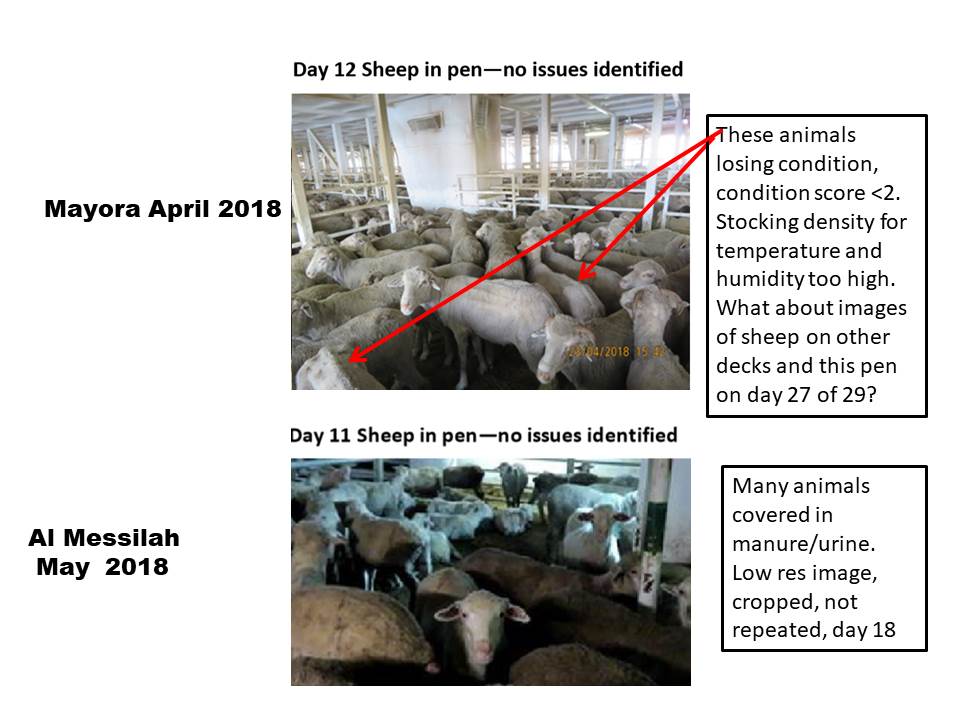
Figure 1: IO photos from 2018 live ship voyages with Patrick Francis comments attached.
This recommendation is equivalent to a death or morbidity by starvation sentence for a significant number of sheep on each voyage. It is a recommendation which demonstrates the conflict the Technical Committee has with drawing up standards for sheep welfare while trying to ensure a commercially viable live sheep export trade. It highlights that accepted sheep husbandry standards for managing shy feeders seem to be ignored in sheep pre-conditioning feedlots for live exports.
Prior to loading who monitors shy feeders in the preconditioning feedlots in Australia? Where is data showing the number of sheep in preconditioning feedlots that are removed for being shy feeders? What happens to the sheep which are removed? The IO report deaths on voyages without stating why they died but many deaths unrelated to heat stress are due to starvation and its complications such as pneumonia. There are no reports on morbidity.
The opposite of shy feeders is sheep which over consume a new diet such as shipping pellets and subsequently contract rumen acidosis. Sheep and cattle are ruminants which mean they have four stomachs, the first of which the rumen is a large container of microorganisms which control the physiology of each animal’s digestive system. These microorganisms must be carefully managed to prevent their bacterial population becoming unbalanced resulting in acidosis which can stop rumen function and often causes death. Ruminants can be treated for acidosis but their future growth performance is usually compromised so most operators remove them from the feedlot.
Feedlot managers try to prevent acidosis by slowing changing new animals diets from roughages (such as pasture, hay or silage) to concentrates (highly digestible grain based mixed rations or pellets) over a 14 – 21 day conditioning period before the final ration becomes routine. NSW DPI notes “A minimum 14-day changeover period is needed to ensure that lambs (sheep) do not suffer from digestive disorders.”
There is no information provided by live sheep export preconditioning feedlots about acidosis incidence and if sheep suffering from acidosis are identified and removed before loading onto ships. If they are not removed it is high likely they will die during the voyage because once the disease becomes acute it is virtually impossible to treat. There are treatments for early stage acidosis but sheep unlike cattle are much more difficult to identify when sick. In cattle feedlots pen riders on horses inspect animals every day, identify any animal showing sickness by its ear tag number and cut it out into a hospital pen. Identifying one sheep in early stages of acidosis in a pen of 100 with no readable ear tags is impossible. Removing the acidosis affected sheep usually waits until the animal is physically incapacitated which means the disease has most likely past its successful treatment stage.
NSW DPI says “Treating lambs suffering from acidosis is difficult and rarely successful, unless lambs are identified and treated within the early stages of developing the disorder.”
Some IO reports refer to hospital pens on the ships but give no details about numbers of animals put in the pens, what the likely sickness is, and the outcome of their treatment during the voyage or on disembarkation in the Middle East. While the IO reports detail mortalities during the voyage they provide no details on morbidity and what become of the affected sheep on disembarkation.
Sheep conditions scores
The third major omission in sheep QA on voyages is the lack of any data on sheep condition scores. Farmers regularly assess conditions scores as a means of monitoring the health of their flocks. Condition score fall when animals are not receiving adequate nutrition as a result of shy feeding, heat stress or disease, all of which are probable on a voyage to the Middle East. The IO should be responsible for monitoring condition scores of representative pens of sheep on different decks every seven days.
Photos provided in the IO reports, are poor quality and taken of random pens, indicate condition scores of some sheep are deteriorating during the voyage. It is interesting that the IOs don’t even keep photographic records of sheep in representative pens. The photos provided in the IOs reports are of different pens of sheep on different decks at different stages of the journey making comparison of sheep conditions scores in representative pens over time impossible.
The Technical Advisory Committee has recognised many of the shortcomings with sheep monitoring on board ship and provided some aspirational ideas for future voyage reporting. “There was agreement that a set of animal welfare indicators should be developed in addition to the current mortality indicator, however industry work in this area is still some time away from completion. Ideally, voyage reporting on the welfare of livestock would be based on a broad set of health and welfare measures (morbidity data) in addition to a mortality rate.
“However, measures of welfare are complex, requiring multiple measurements over time, and vary with many factors including livestock class and preparation and environmental context. These measures have not yet been clearly identified. … However, it is recommended that daily voyage reports be considerably expanded to include additional morbidity and welfare data which would mean an extension of the daily data to be collected and recorded, using digital methodologies to standardise and facilitate recording and reporting.”
The Technical Committee also noted the current shortcomings in pen monitoring.” It was noted that current daily reports require information on health and welfare issues which can be provided as a single assessment for all animals on the voyage. This is unlikely to be useful in understanding factors affecting morbidity and welfare of a particular species or line of livestock, especially given the various microclimates within decks. … the committee suggests that welfare assessments be made daily on a representative sample of.. at least two pens of sheep … per deck. the report should include a detailed panting score, description of animal demeanour, fodder and water intake (including animal feeding behaviour), a report on faecal type and manure pad scores, and a WBGT (Wet bulb glove temperature) and humidity reading.”
“In addition, as the voyage progresses, ‘at high risk’ pens (such as those located in areas known to have poor ventilation, adjacent to the engine, or exposed to direct sunlight) or pens ‘of concern’ (for example, pens identified as the voyage progresses, for example, with unexpected water leaks, poor drainage, unusually wet manure pads, poor design or inadequate trough space per pen) on each deck may be identified. Animals within those pens should also be subjected to the more detailed welfare reporting. The exporter, AAV or accredited stockperson must agree to nominate a sufficient number of suitable representative pens per class for reporting to avoid sampling bias.”
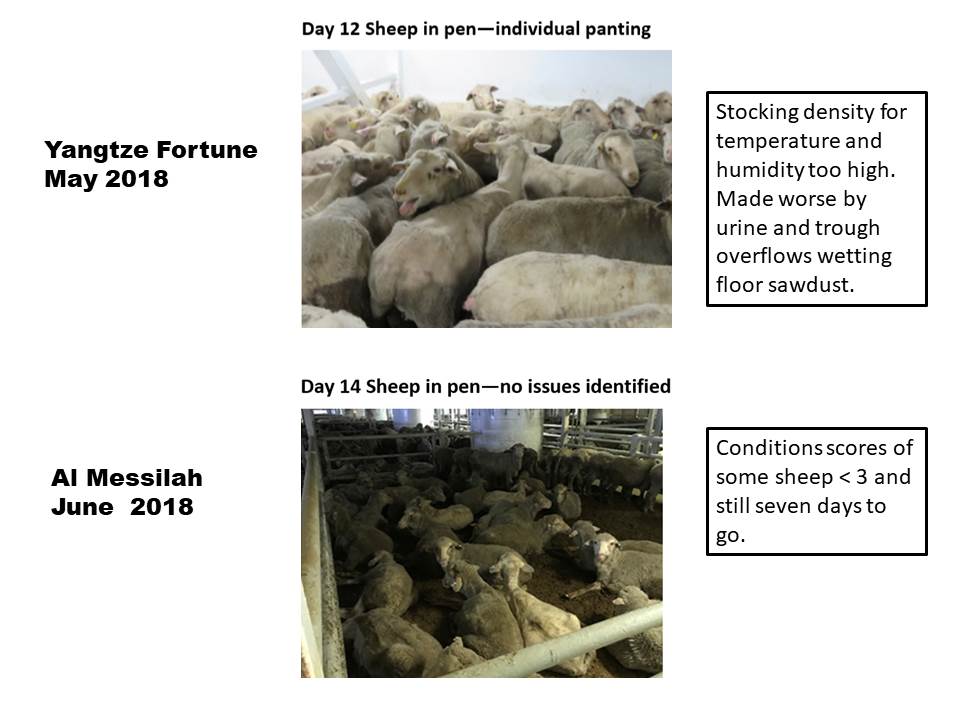
Figure 2: IO photos from 2018 live ship voyages with Patrick Francis comments attached.
Given the obvious shortcomings in pen monitoring data, images provided by the IOs in 2018 voyages reports and the description above of “at high risk pens” by the Technical Advisory Committee, it is hard to comprehend how DAWR and ALEC could make statements in recent media releases that “… during the previous northern summer …there was little evidence of significant animal welfare issues”.
Toxic gases
The fourth major omission in the IO reports is any reference to toxic gases particularly ammonia being generated by decomposition of pen bedding during the voyage. The sheep are standing/lying on saw dust bedding that is unchanged for the duration of the voyages. Urine, manure and drinking water spills combine to wet the bedding and as temperature and humidity increase toxic gases are released as a result of biological and chemical decay. There is no requirement to measure these gases and it is highly likely they could be impacting the health of sheep in particular pens on decks where ventilation is inadequate or breaks down during the voyage.
The Technical Advisory Committee has recognised the ammonia levels in pens must be monitored.” Ammonia is a strong mucosal irritant and at harmful levels predisposes to respiratory disease due to inflammation of the respiratory tract, and adversely affects fodder intake. Based on research studies, and submissions to the committee, there is a strong consensus that ammonia levels above 25ppm—as a time weighted average—are harmful to animals (and humans) and should be avoided. Recording of ammonia levels should be incorporated into the daily and end of voyage reports”.
The Committee recommended “That the standard require that ammonia levels in livestock spaces not exceed 25ppm and that reduction measures be implemented if that level is exceeded in any given area of the vessel.”
Inconsistent reports
Apart from these four issues there seems to be no consistent IO voyage reporting requirements. The six published IO reports in table 1 vary significantly in amount of detail provided by AAVs (Australian Accredited Veterinarian) and IOs. For example on Yangtze Fortune voyage to Oman in May 2018 the IO and AAV gave a comprehensive report describing heat stressed animals due to temperature and humidity and even referencing the fate of animals from the hospital pens. The AAV visited the hospital pen sheep in the Oman feedlot the day after unloading and noted “…they were segregated from the others and doing well.” This AAV also noted one ewe gave birth to twins which were euthanased based “…on the high temperatures expected in the feedlot post-discharge.”
In contrast the AAV report for the Maysora voyage to Turkey in June 2018, contains no temperature data, or any perspectives on why sheep died during the voyage. Ironically this report states how the AAV involved “… has a long history working in the …international livestock industry… and worked almost exclusively for this exporter over the past 11 years on more than 90 long haul voyages and 20 short haul voyages, with an emphasis on the Middle East.”
Take home message
The live sheep export industry, the federal government regulators, farmer suppliers, preconditioning lot feeders, and exporters are operating in a technically based sheep welfare environment that treats animals as widgets. It’s an environment in which a defined level of sheep suffering and death is acceptable as the cost of doing business. In other words they consider a certain level of deaths and suffering is acceptable providing they don’t exceed guideline levels.
The government’s Technical Advisory Committee could not develop and recommend standards that avoided sheep suffering and deaths on future voyages. It accepted some undesirable welfare outcomes by stating that “…the committee cannot focus solely on enhancing animal welfare – it must consider the impact of any proposed changes (to standards) on the future viability of the industry.”
Live export participants who treat sheep as widgets that must endure a level of suffering and deaths on voyages undermine community trust in the trade. The community won’t accept avoidable sheep deaths on boats as a cost of doing business, its members know that these unavoidable outcomes will end once the sheep live trade from Australia ends.
I know that occasionally sheep die in the paddock for unknown reasons, but the aim of every farmer’s sheep husbandry and shepherding is to ensure avoidable deaths are prevented through appropriate management such as provision of adequate nutrition 365 days a year, regular checks for internal and external parasites, monitoring body condition scores, monitoring lambing, preconditioning animals correctly when changing their diet from pasture or stubble to grains or pellets, vaccinating against preventable diseases, and minimising stress associated with mustering, handling and transport.
In my view the widget mentality applied by all the players participating in live sheep exports mean they cannot be trusted. That’s because all these players no longer share the values of people who respect sheep as animals not widgets, they accept a level of sheep suffering and deaths as a cost of doing live trade business, and place emphasis on profits over the welfare of animals.

